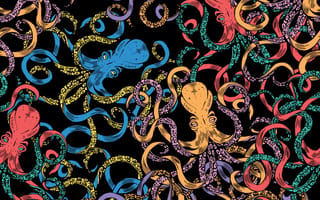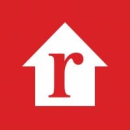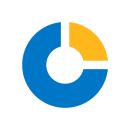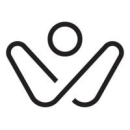As tech companies grow, complexity inevitably ensues — hierarchies stack, reporting lines tangle and organizational flow charts sprout unwieldy tentacles.
But communication lines don’t have to become a bureaucratic labyrinth. For UX designers and engineers, decentralization is the key to effective collaboration.
Companies like Closedloop.Ai, Rex, Realtor.com and Workrise have put their twist on decentralization by creating unique embedded working models. In variations of the embedded — or decentralized — model, UX team members are integrated into project-based teams throughout the organization, rather than working in a UX silo.
“At Workrise, we work in an embedded domain team model, which means that a dedicated team of a PM, designer, researcher and engineers collaborate toward common objectives in specific areas of the user journey,” Workrise Director of Product Design Anna Lepine told Built in Austin.
Kevin Beaudoin, principal software engineer at Realtor.com, echoed Lepine’s advocacy for the model.
“Each of our front-end teams are led by a trio composed of a product lead, a design lead and a tech lead,” he said. “Embedding a design lead within each squad ensures we have someone dedicated to the initiatives and that we can get easy access to feedback on the implementation.”
Beaudoin described the model as a way to nurture the flow of communication between engineers and designers.
“Far from being isolated in their squads, our designers communicate with each other on a regular basis to make sure we maintain cohesion in our product,” he said.
Georges Colbert, machine learning lead at Rex, described the company’s dual engineer-and-designer partnerships, while Closedloop.Ai Product Designer Roya Paydarfar advocated for creating a collaborative space: physical or virtual.
“The advice I’d offer would be to get designers, PMs, and engineers in one room — or Zoom — and invest time in outlining a clear process that works for everyone, one that grows and changes as the company does,” Paydarfar said.
As these four Austinite teams demonstrate, decentralization is the future of UX collaboration, but there is no one-size-fits-all model. Instead, individual teams must find the structure that creates the most visibility between each far-reaching arm of the organization.
Realtor.com designed its open real estate marketplace for all. The company aims to empower more people to find their homes by breaking down barriers, helping them make the right connections and creating confidence through expert insights. Principal Software Engineer Kevin Beaudoin believes in cross-functional synchrony. “Working as a team allows us to discover potential issues much faster than if we had to synchronize across multiple different work units,” he told Built In Austin. “In my opinion, this approach ensures good communication and collaboration efforts within teams of the organization.”
What kind of communication channels or collaborative strategies does Realtor.com use to facilitate communication between your design and engineering teams?
As a member of the squad, the design lead contributes to all our agile ceremonies. Their work is also planned and tracked as design items within each sprint to increase visibility and help identify potential blockers — this is how we make sure that all team members are on the same page.
Most of the time we can iterate in parallel, development can lay the foundations as soon as the low-fidelity design is ready. We have access to frequent feedback and can show progress every single sprint.
How does your company culture foster the collaborative relationship required to make the two teams successful?
“We own it” is one of our core values at Realtor.com. We have a bias for action and reward performance. We believe in teamwork and holding ourselves and one another accountable. This is why we have a trio of product lead, design lead, and tech lead at the heart of all our frontends squads.
We want to make sure every team is fully committed to what they are working on and that they own every aspect of their work. This is also why we commit to validating our work as early and frequently as possible. We also make sure our decisions are based on data and that we collect as we iterate.
As we strive to deliver a culture built on integrity, trust and respect, it’s important that every voice can be heard. Within the organization, we have tribunes where teams can gather feedback or celebrate success. Events like quarterly planning, monthly product reviews and community all-hands are all moments where teams can share what they are working on and most importantly gather feedback.
What advice would you offer to other companies looking to build alignment between the two teams?
Communication is the key to success. A good feedback loop is crucial at every single step to ensure the team is moving in the right direction at the right pace. Be careful who you invite for feedback and when you invite them. Including the wrong people at the wrong time could delay your project.
Be cautious not to fall into the trap of including only people that share the same opinion as you in the early stages. Having someone that has a different point of view will force you to reconfirm your hypothesis or to evaluate alternative solutions. I’m a strong believer that everything should be tested and that data-driven decisions are better. Make sure your ideas are validated as much as possible and as early as possible. Don’t hesitate to pause and reflect when a test isn’t conclusive.
Having someone that has a different point of view will force you to reconfirm your hypothesis or to evaluate alternative solutions.”
I know it’s hard to spend time and effort on a product just to end up pausing its release. But if the data isn’t conclusive, it means it requires a little more work. Always come back to the original hypothesis and how you intended to validate them in order to make sure you’re still aligned with the original pain points.
Closedloop.Ai aims to work hand-in-hand with healthcare organizations to tackle the industry’s biggest challenges. The artificial intelligence company strives to enhance healthcare decisions with AI. Product Designer Roya Paydarfar acknowledges the ever-changing state of UX development. “There is also a general understanding that our processes are dynamic,” she said. “If there is a kink in the system, there isn’t blame put on an individual — we explore what needs to be adjusted in our process to avoid future problems.”
What kind of communication channels or collaborative strategies does Closedloop.Ai use to facilitate communication between your design and engineering teams?
Like many other remote-friendly companies, ClosedLoop uses many tools and meetings to maintain day-to-day collaboration — Slack, Asana, Jira, Scrum meetings, et cetera. We also have documents called product enhancement proposals (PEPs) that are written and updated by our product managers before and during new product design and development. PEPs are critical for facilitating communication between design and engineering by ensuring all project information — from background and assumptions to code snippet requirements and final designs — are housed in one place.
With the consultation from design and engineering, the product managers have invested a lot of time defining how and when each team should be involved during each phase of new product builds and when approval is required to move forward. Our process pays off by allowing teams to efficiently know what steps to take and milestones to look for, stay focused — and know when to involve other teams.

How does your company culture foster the kind of collaborative relationship required to make the two teams successful?
The teams at ClosedLoop know that everyone’s role is equally important for achieving our goals. This mentality has trickled into how teams collaborate: We rely on each other and are genuinely interested in seeing what everyone is working on. The product team will often host meetings to showcase what we’ve been doing over the quarter to other teams who might not be as involved.
We’ve especially seen this re-evaluation of our process as we’ve grown as a company. Most recently, during our on-site retreat, we were able to get product and engineering teams in one room to discuss how our process works, what can be improved, and how.
As a distributed company, we only get a couple of opportunities a year to collaborate in person, so it is super helpful to have in-person workshops to not only ideate solutions for bigger challenges but build stronger relationships among team members.
It is super helpful to have in-person workshops to not only ideate solutions for bigger challenges but build stronger relationships among team members.”
What advice would you offer to other companies looking to build alignment between the two teams?
Once I was able to feel aligned with our processes, it was a lot easier to know what information I needed to confidently begin designs — as well as identify when to open that line of communication with our engineers.
Workrise is a workforce management solution for the skilled trades. Workrise strives to make it easier for skilled laborers to find work and for companies to find in-demand, trained workers. Director of Product Design Anna Lepine believes that healthy culture trickles from the top down. “We also believe that the health of partnership at the team level is only as strong as our partnerships at the leadership level,” she said. “My peer directors and I focus a lot of time on keeping each other informed and staying aligned, so that we can support each other and that our individual functions are getting consistent communications and direction.”
What kind of communication channels or collaborative strategies does Workrise use to facilitate communication between your design and engineering teams?
The full team is interacting daily via shared ceremonies and Slack and their efforts are all captured in Jira. We also have Slack channels to promote cross-team sharing and communication.
There are lots of benefits to this model — it allows teams to develop strong relationships and empathy, establish what works best for them based on skill sets and preferences, and create a shared sense of ownership and accountability.
How does your company culture foster the kind of collaborative relationship required to make the two teams successful?
One is our annual hackathon, where teams gather in person to bring to life pet projects they’ve been dreaming about over the course of the year. It’s always amazing to see what is created in such a short amount of time, the range of skills that everyone brings to the table and the magic that happens when all the functions are represented within a team.
The other particular favorite, which a past design colleague introduced, is called “breadboarding.” It’s a UX exercise where stakeholders, design and engineering jointly sketch workflows of the desired experience of a new solution. We are able to quickly work out a lot of the preliminary details, risks,and questions through that single activity. While it isn’t always what the final product looks like, it really helps jumpstart the process.
What advice would you offer to other companies looking to build alignment between the two teams?
Create shared goals – it’s important folks are rowing in the same direction. If you don’t work in an embedded model, seek other ways to help build relationships and shared ownership toward an outcome in a project.
Create shared goals – it’s important folks are rowing in the same direction.”
For designers, invite engineering early and often — involve them in research and discovery. If they can’t participate, create ways to distill your learnings to give them context. Create spaces to collaborate on early sketches of solutions. Actively work against the predisposition to feel that design is your territory alone, while also recognizing the value you uniquely bring in your role.
Be a role model: It’s key that leaders trust and support each other in interactions with their teams. Reinforce that no function is too precious or more important and that by working together, the work is improved.
Some of my favorite collaborations have been with engineers — they challenge me to think differently and expand my skills. And I love to see the way that together, our functions bring ideas to life.
Rex is an ecosystem that aims to incubate, launch and operate tech startups across a number of sectors at the intersection of technology and real estate: services, fintech, insuretech, data services and more. Machine Learning Lead Georges Colbert spoke to Built In about collaborating with outsourced teams and internal teams. “Rex, as a holding company, invests in multiple startups — one of them being JobCall, a voice AI assistant for real estate,” he said. “JobCall consists of a two-person team: one product or design lead and one machine learning or engineering lead, along with two outsourced frontend-backend engineers.”
What kind of communication channels or collaborative strategies does Rex use to facilitate communication between your design and engineering teams?
We prioritize fast iteration, effective communication and consistent collaboration as we recognize their impacts on our growth and success. Successful collaboration is driven by both sides being consistently informed about each other’s decisions. The engineering lead frequently joins product and design meetings, and shares his perspectives on timelines and difficulty for any suggested design. Similarly, the product/design lead joins every daily engineering stand-up — and listens to the discussion around progress made on feature implementation. This approach allows both sides to stay informed in each other’s discussions and prevents work from being done in silos.
How does your company culture foster the kind of collaborative relationship required to make the two teams successful?
At JobCall, we value every teammate’s opinion and encourage teammates to share their thoughts on all matters, even those outside their scope of work. This is exemplified by leadership during daily stand-ups, where both the machine learning/engineering lead and product/design lead openly discuss their work and request feedback from all teammates on what’s missing or what could be improved. Our culture is one of open communication: Everyone feels comfortable speaking up and offering their input. In return, everyone is receptive to feedback from others.
What advice would you offer to other companies looking to build alignment between the two teams?
The engineering lead and the product lead need to have a good working relationship. At JobCall, this stems from a mutual respect for each other’s capabilities and appreciation for the inputs each leader can provide.
Scheduling regular one-on-one time is one of the best ways to ensure a strong working relationship.”
The engineering lead should listen to the product lead’s explanation of why small changes can lead to significant improvement in user experience, while the product lead should appreciate why decisions on engineering architecture may slow the pace of iterations but benefit the company at scale. Scheduling regular one-on-one time is one of the best ways to ensure a strong working relationship.













